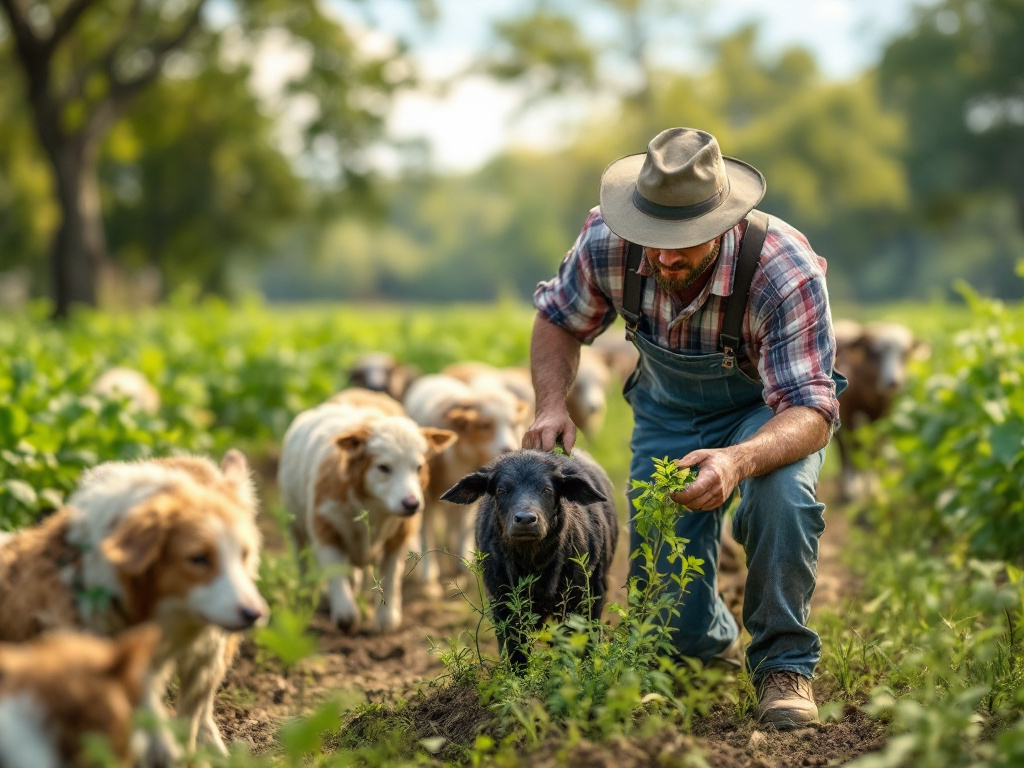Image generated by flux-ai.io & content generated by ChatGPT Version 4o-mini
Farmers in Gilchrist County Get a Boost with New Budgeting Tools
Gilchrist County, known for its picturesque landscapes and rich agricultural heritage, is home to many hardworking farmers and ranchers. With the recent publication of new enterprise budgets by the University of Florida’s Institute of Food and Agricultural Sciences (UF/IFAS), local growers now have a powerful tool to help them navigate the often tricky world of farm finances. This could mean big changes for the agricultural community right here in our county.
What Are Enterprise Budgets?
You might wonder, what exactly is an enterprise budget? Think of it as a detailed financial plan for a specific part of your farm—like a single crop or livestock operation. Instead of looking at the whole farm’s finances, farmers can focus on individual components to see how much it will cost to grow a crop, raise animals, or even try out new farming practices.
For example, if a farmer in Gilchrist is thinking about planting watermelons, an enterprise budget will help them estimate the costs of seeds, water, fertilizer, and labor, alongside the expected revenue from selling the fruit. This helps them make informed decisions about whether the investment is worth it.
Why This Matters for Gilchrist County
With over 549 farms in Gilchrist County, primarily focused on livestock, the introduction of these budgeting tools comes at a crucial time. Many local farmers face rising costs for inputs like feed and fertilizer. The enterprise budgets can provide insights on how to manage these expenses better, especially when it comes to exploring alternative crops or livestock that may yield higher profits.
For instance, if a farmer has underused land or equipment, they might use the budget to evaluate starting a new venture, like growing specialty crops or establishing a more efficient irrigation system. By understanding the potential costs and returns, farmers can better allocate their resources and minimize risks.
Local Benefits and Opportunities
The new enterprise budgets are not just about numbers; they represent real opportunities for the community. For instance, if a farmer successfully grows a new crop that attracts more customers to local markets, it could boost the local economy and create more jobs in agriculture.
Moreover, the flexibility of these budgets allows farmers to adjust their plans based on current market conditions. If they find that prices for certain crops are higher at local farmers’ markets versus wholesale, they can adapt their strategies accordingly. This adaptability is crucial in today’s fast-changing economic landscape.
A Resource for Future Generations
Another exciting aspect of these enterprise budgets is their potential to keep the next generation involved in farming. Young people interested in agriculture can use these tools to learn about the financial side of farming, helping them make informed decisions if they decide to take over the family business or start their own. This could be a game-changer for sustaining farming traditions in Gilchrist County.
How to Access These Budgets
Farmers and ranchers in Gilchrist County can access these valuable resources through the UF/IFAS websites. From tropical fruits to beef cattle, there are enterprise budgets tailored for a variety of local crops and livestock. This allows farmers to find the information that most closely matches their needs, making planning more straightforward and effective.
In conclusion, the introduction of enterprise budgets by UF/IFAS is an exciting development for Gilchrist County’s agricultural community. By providing farmers with the tools to better manage their finances, these budgets can help ensure that local agriculture continues to thrive for generations to come. Whether you’re a seasoned farmer or just starting out, these resources could be key to your success.
References
FE1109/FE1109: An Introduction to Florida Commodity Enterprise Budgets: A Tool to Improve Farm Business Planning. (n.d.). Ask IFAS – Powered by EDIS. https://edis.ifas.ufl.edu/publication/FE1109

